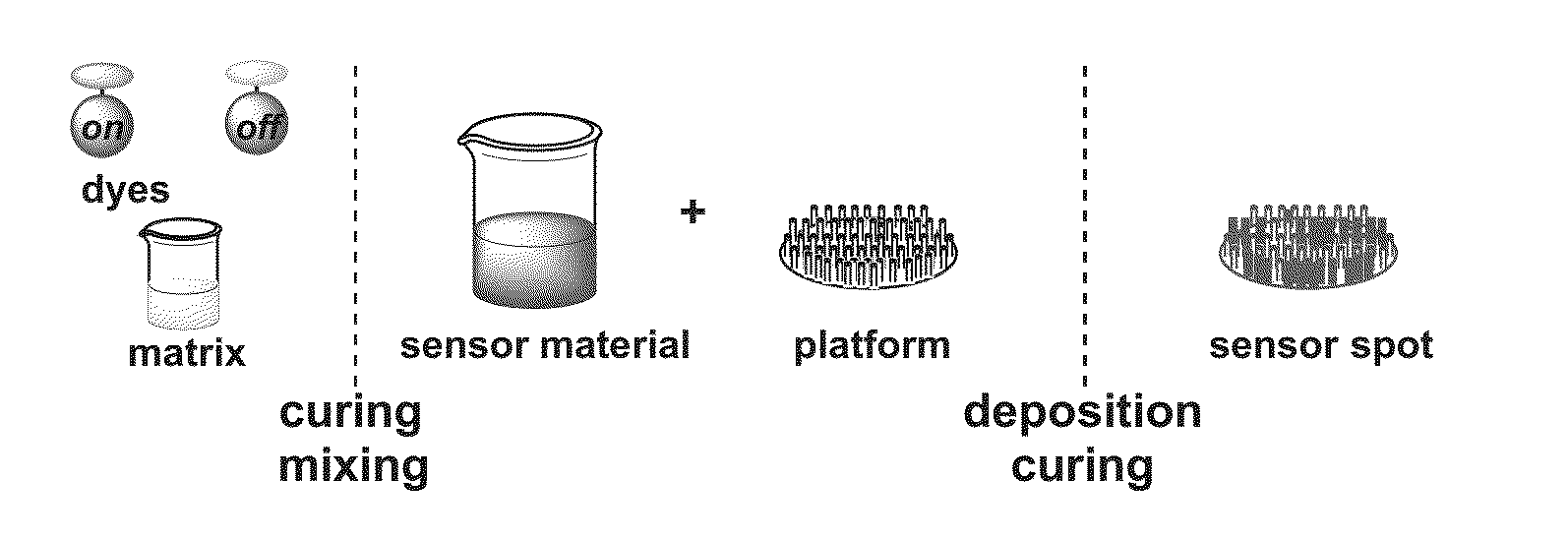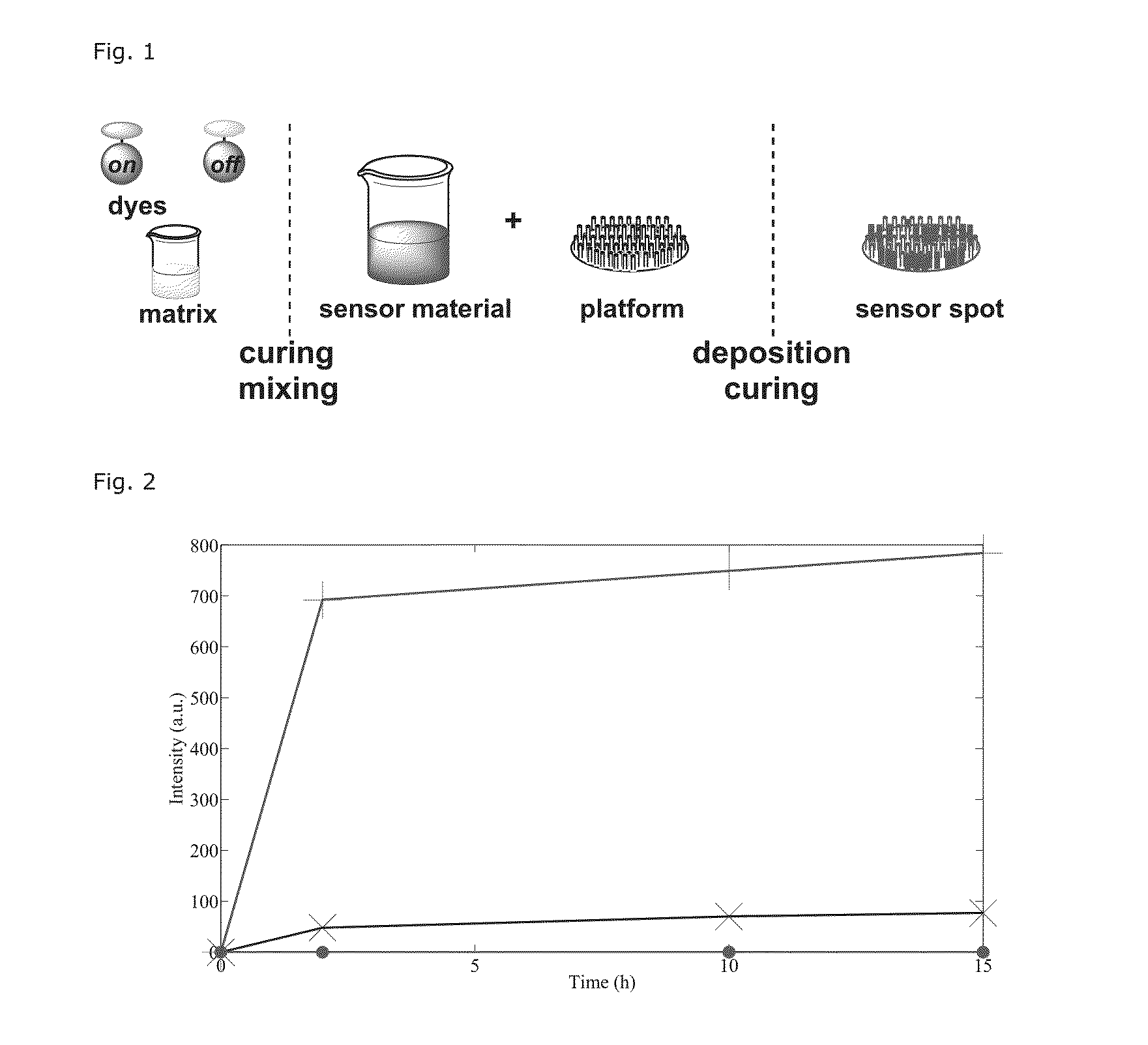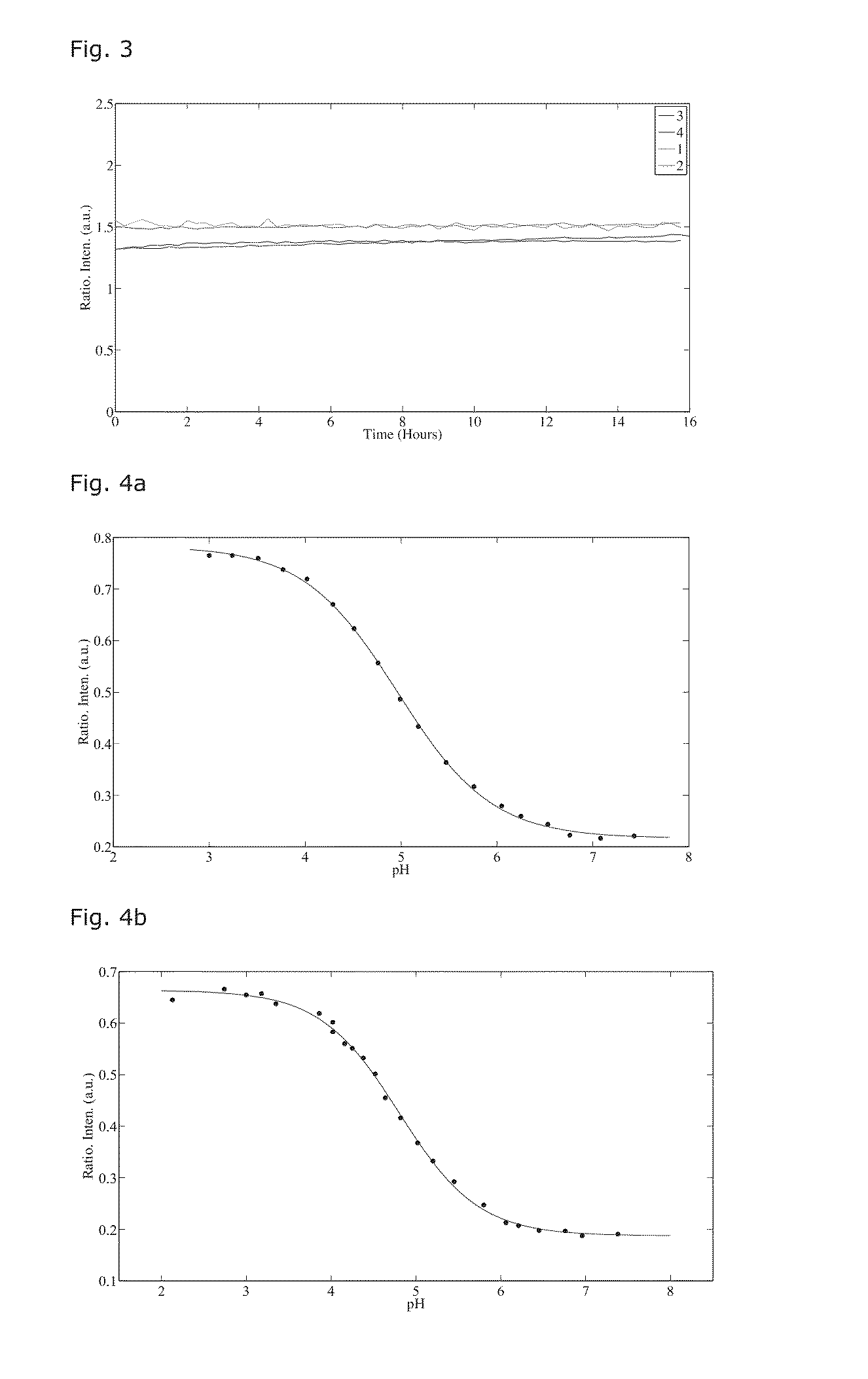Sol-Gel Based Matrix
a matrix and gel technology, applied in the field ofsolgel based matrix, can solve the problems of no silane, no silane, no silane, etc., and achieve the effect of reducing the response time of the sensor
- Summary
- Abstract
- Description
- Claims
- Application Information
AI Technical Summary
Benefits of technology
Problems solved by technology
Method used
Image
Examples
examples
[0095]Methods and Materials
[0096]Compounds were used as received. Sol-gel monomers were purchased from Sigma-Aldrich. Sol-gel catalysts were purchased from Sigma-Aldrich and used as recieved. Solvents used were analytical or HPLC grade. An electronically controlled oven was used to cure the ORMOSIL thin-films.
[0097]Synthesis
[0098]The synthesis of compounds 1.BF4and 2.PF6are reported elsewhere.18
[0099]General preparation of tetramethoxyamino-acridinium (TMAAcr):
[0100]2 (162 mg, 0.23 mmol) was dissolved in 15 ml acetonitrile and n-octylamine (26 ml, 0.14 mmol) was added to the solution. The reaction mixture was heated to slight reflux temperature and stirred in 5 h. The reaction mixture was allowed to cool down when the color of the mixture had changed from blue to red-brown and MALDI-TOF analysis indicated that a mass corresponding to that of the starting material was not present any more. The reaction mixture was washed with heptane (3×50 ml). The crude product was isolated by evap...
PUM
| Property | Measurement | Unit |
|---|---|---|
| height | aaaaa | aaaaa |
| height | aaaaa | aaaaa |
| width | aaaaa | aaaaa |
Abstract
Description
Claims
Application Information
 Login to View More
Login to View More - R&D
- Intellectual Property
- Life Sciences
- Materials
- Tech Scout
- Unparalleled Data Quality
- Higher Quality Content
- 60% Fewer Hallucinations
Browse by: Latest US Patents, China's latest patents, Technical Efficacy Thesaurus, Application Domain, Technology Topic, Popular Technical Reports.
© 2025 PatSnap. All rights reserved.Legal|Privacy policy|Modern Slavery Act Transparency Statement|Sitemap|About US| Contact US: help@patsnap.com



